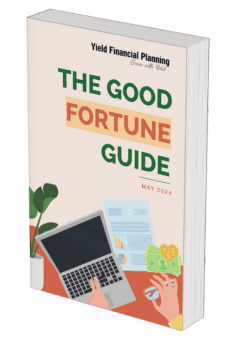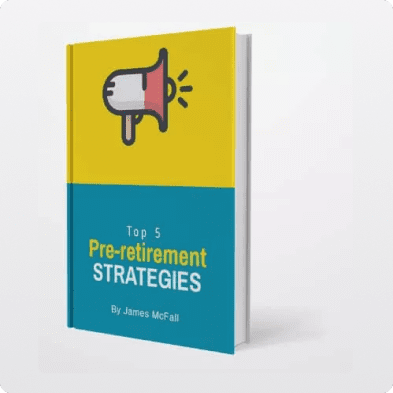This article forms Part 1 of a two-part feature on exit strategies where we have collaborated with our good friend Nicole over at Studio Clvr to display our passion for exciting local businesses.
Finding an appropriate exit strategy tailored to you and your business situation is a vital task within a business’s life cycle. Whether you no longer have the same passion and drive as once before and are ready to hang up the boots or are planning forward into the future, you should be contemplating which road you would like to take to exit your business with as much foresight as possible.
This is sometimes easier said than done though and you may feel disheartened and anxious about life after an exiting strategy, especially in terms of your finances as you will no longer be receiving an income from your business. At Yield we are here to help and can assist you to harmonise your business plans with your personal financial plan for retirement.
Pre-exit planning
Even if you don’t yet know exactly what form your exit from your business will take, planning for exit as you build your business can increase your value and your options when the time comes. There are a lot of factors that can be leveraged by your financial planner to help, but the work you have put in to create value in your business assets as the business evolves will stand you in good stead for a stronger exit. We’ve collaborated with Nic at Studio Clvr to provide you with some solid tips on building value into your business, which she has covered in the second half of this article, Creating value so your business can build to grow—and to exit.
Exit Strategy Considerations

Identifying what you want
Start by determining what is most important to you when you look to exit your business or sell your business. What is your timeframe? Are you seeking a full or partial sale? What are your deal breakers?
There are a range of different options you can choose from when exiting your business and depending on your circumstances, expectations, and business structure, this will help you choose a path that meets your expectations.
Minimising tax
Who doesn’t want more free-flowing funds to do with as they please in post business life? Legally minimising tax is one of the most important aspects of careful business exit planning. Depending on your overall financial position small business tax concessions could help you greatly reduce the tax you pay or even mitigate it entirely, making it one of the most powerful exit strategies for business.
Other tax planning strategies include using your business structures to funnel money between entities effectively, such as considering a bucket company structure and SMSF, which can be complimented by timing sale agreements considerate of tax implications.
Closing vs selling
The decision on whether you close vs sell your business can affect your exit strategy significantly, as well as the funds you receive. As an owner you may close and liquidate your business assets completely, meaning a lump sum will be headed your way quickly, which is then yours to utilise.
The option of selling either part or all of your business, can mean your business will keep operating as a going concern which is often preferable. This option will usually result in a higher sale price but will take more careful exit strategy planning and may take years to execute.
If you do decide to keep some residual ownership when you step down from day to day, this can be beneficial as you retain entitlement to some potential dividends and/or growth. Conversely you do lose control of the future success of the business and therefore carry some greater risk of underperformance. Be careful about your liability risk also if you maintain directorship responsibility.
Ensure your management team is ready
Depending on whether you sell your business as a going concern in its entirety, or if you sell down incrementally over time, you need your team to be prepared for the transition.
Some external buyers may be seeking to buy your business for economies of scale and therefore may not need your entire team, whereas some may view the team you have as an advantage in the purchase. Either way your team need to be informed and on board, ready to adapt and work the way the buyer would like, to support an optimal business valuation.
If the buyout is part of an internal succession plan, where some of your team buy you out over time, you need real buy in and support from your management team in particular to make it successful for everyone.
Inform your clients
Relationships with clients don’t come easy and are difficult to sustain for long periods of time. Informing them that the business will be closing or that they will be under new management is essential. Letting them know how the move will benefit them and that they will be in great hands, is a good idea to ensure minimal loss of clientele occurring once you exit your business.
Exit strategy options

There are a few main strategies you can lean towards when looking for an exit strategy business plan, which can potentially consist of:
- Mergers and Acquisitions (M&A)
- Initial Public Offering (IPO)
- Liquidate & Close
- External Purchase
- Sell internally
Mergers and acquisitions
Both are popular options for acquirers seeking to grow their business through the economies of scale that can come from a larger business. M&A can also be the perfect exit strategy, that can enhance business valuation, when you are prepared to continue working in the business in the short to medium term and can negotiate terms for an agreed business exit strategy. Examples of synergies that can make M&A attractive, is operational improvement that result in cost reduction; or businesses that have complimentary services, that can be sold through the others customer networks.
Initial Public Offering
IPO’s are a common option for rapidly growing companies, often with high cash burn rates, such as technology start-ups or prospective miners. By sourcing external funds and capital, the business is no longer private and disperses risk among investors and shareholders, but has the means to super charge growth, as it opens a mechanism to raise capital from investors more easily.
Initial Public Offerings provide owners an opportunity to release some capital from their business by selling shareholding to new public shareholders, while retaining some ownership they hope to grow exponentially over time. Making your company public, is typically reserved for companies that are either more established or valuable, and have minimum rules for listing.
There are also distinct rules that must be fully understood and followed once a company becomes public and there may be a time investment of years, before being able to fully realise a complete business exit.
Liquidate and close
A business exit strategy that is often sought when there is limited demand for purchasing the business or little planning has gone into the business exit. Businesses which choose to liquidate are often single point sensitive to the business owner’s involvement in the business, such as trades, and are commonly smaller businesses. Through liquidating and closing your business you may still achieve sales proceeds if done correctly.
External purchase
An external purchase is a likely cause of exiting a business, however it is not an event that you can easily plan for, as you cannot know exactly when an offer may be forthcoming. Nor can you rely on it, so if you are currently considering an exit strategy, you are almost certainly best to be proactive about finding a suitable buyer and then be ready to field a potential external purchase offer.
The purchase offer can come from a matter of sources, ranging from other businesses, private equity, large corporations, funds, etc. Hopefully by this stage you have grown the business to best of your ability and are attracting attention from potential buyers and ideally have multiple buyers which will create favourable competition, supporting a higher valuation for your business.
Sell Internally
As a business owner, selling your business through internal succession can be the best exit strategy and should always be considered. Especially by smaller business owners and for a range of reasons. As a start if you sell internally, then your business will carry on as a going concern. For your team that is buying your business from you, they understand your business, your customers, your process and suppliers, so they are also the ones most likely to see value in your business, because they have helped grow it.
This minimises disruption for your clients also and means you know your business will not be impeded by new operations and management. It may also leave the door open to a smaller holding if it suits and can enhance value, because the employees have a more in depth understanding of the business.
You will most likely need a few years in advance for this to be successful and it will require a viable plan for the employee/s to finance the buyout agreement. There are several ways to approach a private internal buy out, which can include a more passive shareholding structure or hands on directorship. At Yield we are regularly discussing business succession and exit strategy options with our clients and the process of utilising the funds in the best way possible as well.
Post exit strategy

Once your exit strategy is complete you should have a sufficient amount of funds to work with depending on which way you would like to go. Many owners find it a significant adjustment in lifestyle after selling, and may be looking for things to do, which can include the thought to keep working in some way shape or form.
Whatever your preference is in this regard, Yield will be able to help you develop a financial plan where you can live the life that you want, while leveraging off the assets you have accumulated and setting yourself up to self-fund your own income needs as required. This planning should ideally be done with foresight to maximise opportunities that exist.
The time after selling your business will most likely be a time of new beginnings where endeavours that have been put off for far too long are able to come into fruition. But the sale of your business will only happen the way you ultimately would like it to if you give it the time and thought it deserves and our qualified advisors are here to help you along the way.
The Yield team would like to thank Nicole and Studio Clvr CLVR for their collaboration with us and encourage you to go view their companion article to this piece, Creating brand value so your business can build to grow—and to exit


















